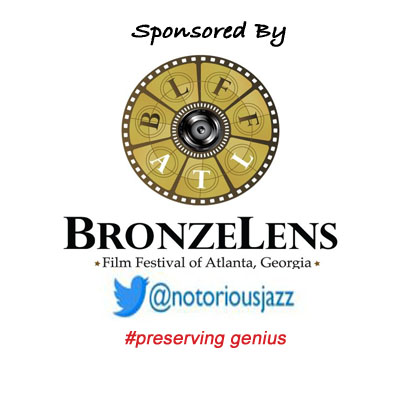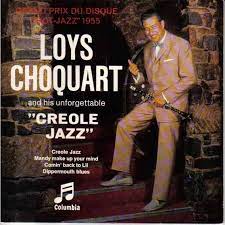
Daily Dose Of Jazz…
Loys Choquart was born on October 11, 1920 in Geneva, Switzerland. Leading his own ensemble by age 17, and at 19 had a position at Radio Geneva, remaining a broadcaster with the station for decades.
He first recorded with his ensemble the New Rhythm Kings in 1942, then with a new ensemble, the Dixie Dandies, in 1943 which included Henri Chaix and Wallace Bishop as sidemen.
According to jazz historian Rainer E. Lotz, by the end of World War II “he was considered the best Swiss saxophone and clarinet soloist”, playing in both Dixieland and swing idioms. His Creole Jazz ensemble won the Prix Jazz Hot in 1955 on the basis of recordings made in 1952.
He also led a larger ensemble with an orchestra, which included pianist and vibraphonist André Zumbach. During his later life he toured extensively throughout western Europe and owned a club in Geneva called La Tour. Unfortunately there are no recordings of his playing online.
Reedist, bandleader and broadcaster Loys Choquart transitioned on December 10, 1989 in Puplinge, Switzerland.
More Posts: bandleader,broadcaster,history,instrumental,jazz,music,reeds
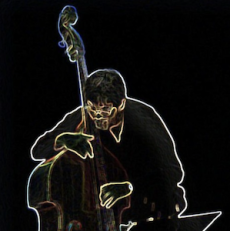
Daily Dose Of Jazz…
Manny Flores Jr. was born in El Paso, Texas on October 9, 1954. He spent his first eighteen years of life as an army brat, traveling and listening to music in a variety of different places. He began his playing career in the summer of 1971 at a gig at the Fort Huachuca NCO Club. At this time his inspiration for the bass was fellow left-handed bass player Paul McCartney. Graduating from Buena High School in Sierra Vista, Arizona in l972.
He also listened to jazz when he would buy Blue Note LPs at the bargain bin with Eric Dolphy and Charles Mingus among his favorites. He then graduated from Cochise College in Douglas, Arizona in 1974 with an Associates degree in Liberal Arts. By 1975 he was back in his hometown of El Paso and began playing in various groups including Top 40 and Country/Western groups in New Mexico, Wyoming and Arizona. Enrolling at the University of Texas at El Paso, he received his Bachelor of Music Education degree in 1982.
In 1983 he auditioned for and began playing with the El Paso Symphony Orchestra under the direction of Maestro Abraham Chavez Jr. He also began teaching instrumental music in the Ysleta Independent School District. During the decade Manny met many musicans who inspired him to make music a way of life including Frank Zappa, Jaco Pastorius, Ray Brown and Julliard cello teacher Harvey Shapiro.
In 1985 he began the first of a four-year trek to Victoria, British Columbia, Canada to attend the prestigious Johannesen International School of the Arts. He attended six-week master classes, and spent a summer in New York City studying jazz and listening to live performances of Charlie Haden, Marc Johnson, Harvie Swartz, and Eddie Gomez.
Flores has played with several big bands in addition to Bobby Saunders, Frank Dove and the Sundowners, Mario Otero, Crossroads, El Paso Brass Quintet, Bobby Booth Dixieland Band, M.D. Quartet, U.T.E.P. Lab Band I with Gene Lewis, Mike Francis Quartet, Gerald Hunter and the Quintones, Art Lewis and the Earthmen, Orchestra Puerto Rico, Spice of Life, Bing Browning Trio, Cecile Larochelle, The Platters, The Four Lads, The Four Aces, Jimmy Dorsey Orchestra, Mel Carter, Roger Miller, Johnny Mathis, Guy Lombardo’s Royal Canadians, Charlie Rouse and Boyz II Men.
By 1998 he made his first trip to Rio de Janeiro, Brazil to fulfill a lifelong desire to experience Brasilian music firsthand and to meet one of his favorite musicans Hermeto Pascoal. He hung out with his friends Albert Suhett, Itibere Zwarg, Marcio Bahia, and Hermeto. Marcio Bahia introduced him to bassist Adriano Giffoni with whom he studied with each summer in Rio.
Bassist Manny Flores Jr. is involved in the Universal Music movement and continues to perform locally in Austin and El Paso.
More Posts: bass,history,instrumental,jazz,music
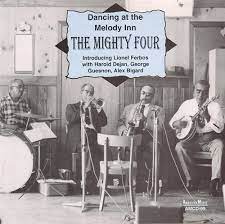
Daily Dose Of Jazz…
Alexander Louis Bigard, Jr. was born on September 25, 1899 in New Orleans, Louisiana into a musical family. His brother was Brney and his cousins were Natty Dominque and A.J. Piron. He studied drums under Louis Cottrell, Sr., and played at times with Cottrell in A.J. Piron’s band in the 1910s.
He played with the Excelsior Brass Band and Maple Leaf Orchestra, as well as with Peter DuConge, Buddy Petit, and Chris Kelly in the late 1910s and early Twenties. He was a member of Sidney Desvigne’s band in 1925, then with Kid Shots Madison. For much of the Thirties he worked with John Robichaux.
In the mid-1940s he was in Kid Rena’s band, then formed his own ensemble, the Mighty Four, in the 1950s.During the Dixieland revival period of the 1960s, he was a regular at Preservation Hall, and performed or recorded with Harold Dejan, Kid Howard, Punch Miller, De De Pierce, Billie Pierce.
Becoming deaf around 1967 he left active performance. Drummer Alex Bigard, who was involved for decades with the New Orleans jazz scene, transitioned on June 27, 1978 in his hometown.
More Posts: bandleader,drums,history,instrumental,jazz,music
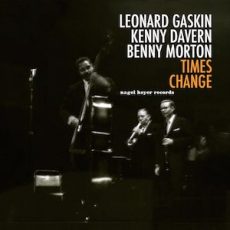
Daily Dose Of Jazz…
Leonard Gaskin was born August 25, 1920 in Brooklyn, New York. He played on the early bebop scene at Minton’s and Monroe’s in New York in the early 1940s. In 1944 he took over Oscar Pettiford’s spot in Dizzy Gillespie’s band,and followed it with stints in bands led by Cootie Williams, Charlie Parker, Don Byas, Eddie South, Charlie Shavers, and Erroll Garner.
In the 1950s, he played with Eddie Condon’s Dixieland band, and played with Ruby Braff, Bud Freeman, Rex Stewart, Cootie Williams, Billie Holiday, Stan Getz, J.J. Johnson, and Miles Davis. In the 1960s he became a studio musician, playing on numerous gospel and pop records. In the 1970s and 1980s he returned to jazz, playing with Sy Oliver, Panama Francis, and The International Art of Jazz.
Gaskin became involved in educating young people later in his life. He toured and performed at New York City schools, sharing his knowledge with elementary students with the Good Groove Band and the International Art of Jazz groups. For more than a decade, he and drummer Oliver Jackson teamed to play the European jazz festival circuit. He also regularly collaborated with Sy Oliver’s Rainbow Room Orchestra.
Capping off his career in 1994, Leonard performed at the White House’s Congressional Ball at the behest of President Bill Clinton. Although his touring schedule slowed dramatically in the decade to follow, he wrote a privately published autobiography and donated his personal jazz collection to the American Music Archives at the Smithsonian’s Museum of American History.
Bassist Leonard Gaskin transitioned from natural causes at a nursing home in Queens, New York on January 24, 2009. He was 88.
More Posts: bandleader,bass,history,instrumental,jazz,music
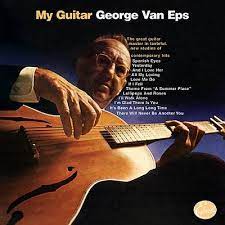
Daily Dose Of Jazz…
George Abel Van Eps was born on August 7, 1913 in Plainfield, New Jersey into a family of musicians. His mother was a classical pianist, his father was a ragtime banjoist and sound engineer and his three brothers were musicians. He began playing banjo at eleven years old but after hearing Eddie Lang on the radio, he devoted himself to guitar. By thirteen, in 1926, he was performing on the radio.
Through the middle of the 1930s, he played with Harry Reser, Smith Ballew, Freddy Martin, Benny Goodman, and Ray Noble. Van Eps moved to Los Angeles, California and spent most of his remaining career as a studio musician, playing on many commercials and movie soundtracks.
In the 1930s, he invented a model of guitar with another bass string added to the common six-string guitar. The seven-string guitar allowed him to play bass lines below his chord voicings, unlike the single-string style of Charlie Christian and Django Reinhardt. He called his technique “lap piano”, as it anticipated the fingerpicking style of country guitarists Chet Atkins and Merle Travis and inspired jazz guitarists Bucky Pizzarelli, John Pizzarelli, and Howard Alden to pick up the seven-string.
Dixieland had a following in Los Angeles during the 1940s and 1950s, and he played in groups led by Bob Crosby and Matty Matlock and appeared in the film Pete Kelly’s Blues. He played guitar on Frank Sinatra’s 1955 album. In The Wee Small Hours.
Playing guitar into his eighties, he built a career that lasted over sixty years. Swing and mainstream guitarist George Van Eps, who recorded eleven albums as a leader and thirty~two as a sideman, transitioned from pneumonia on November 29, 1998 in Newport Beach, California at the age of 85.
More Posts: guitar,history,instrumental,jazz,music



